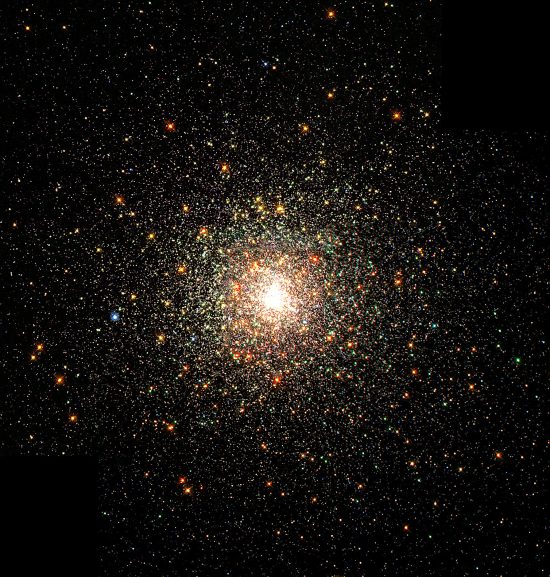
Apr 23, 2019
Spherical clusters of stars are another example of how plasma is organized and confined into coherent formations.
“The image is more than an idea. It is a vortex or cluster of fused ideas and is endowed with energy.”
— Ezra Pound
NGC 6093 (otherwise known as M80) orbits the Milky Way at a distance of 28,000 light-years, along with 146 of its known cousins. Astronomers believe that they can provide an idea of how galaxies evolve and age, since globular clusters are thought to contain some of the oldest stars.
Astronomers think that globular clusters start life from a single birthing event, since gas and dust needed for new stars appears to no longer exist within them. There is some confusion, though, because NGC 6093 contains “multigenerational” stars, something that should not be.
Globular clusters are a particularly difficult problem when gravity-only models of the Universe are considered. Why do they evolve into spheres, rather than disks or ellipses? Stellar orbits inside clusters should cause them to dissipate over time if they are gravitational congregations. Some stars should be accelerated out of the cluster, while stars closer to the center should aggregate.
Since globular clusters orbit galaxies in a halo, each time they cross the galactic plane tidal forces should disrupt them, sending their stars every which way. Why this does not happen is a mystery. NGC 6093 is supposed to be hundreds of millions of years old, yet it remains spherical despite crossing the plane of the Milky Way many times.
The Electric Universe view of stars provides an answer to that quandary. Since stars are positively charged objects bound together by electric and magnetic fields, their interactions with each other is not based on a kinetic model of the Universe. The electric star model insists that it is the strength of electric charges flowing into stars that determines their characteristics.
The old-fashioned Nebular Hypothesis has been found wanting when it comes to analyzing a star’s behavior in galactic formations or globular clusters. Therefore, populations of stars are not dependent on how long it took them to evolve, so the “problem” with multigenerational stars in NGC 6093 does not follow.
Electrically, individual stars might be considered as discrete charged particles, behaving according to the laws of plasma physics and not the laws of mechanical motion. Galactic disks act like Faraday motors, while globular clusters (as has been suggested in the past) might be more like ball lightning.
So, the Hubble research team has not discovered anything extraordinary. The stars in NGC 6093 are acting in accord with electrical concepts. They are probably not that old (as astronomers count age), because they behave according to a plasma cosmology hypothesis.
Stephen Smith












